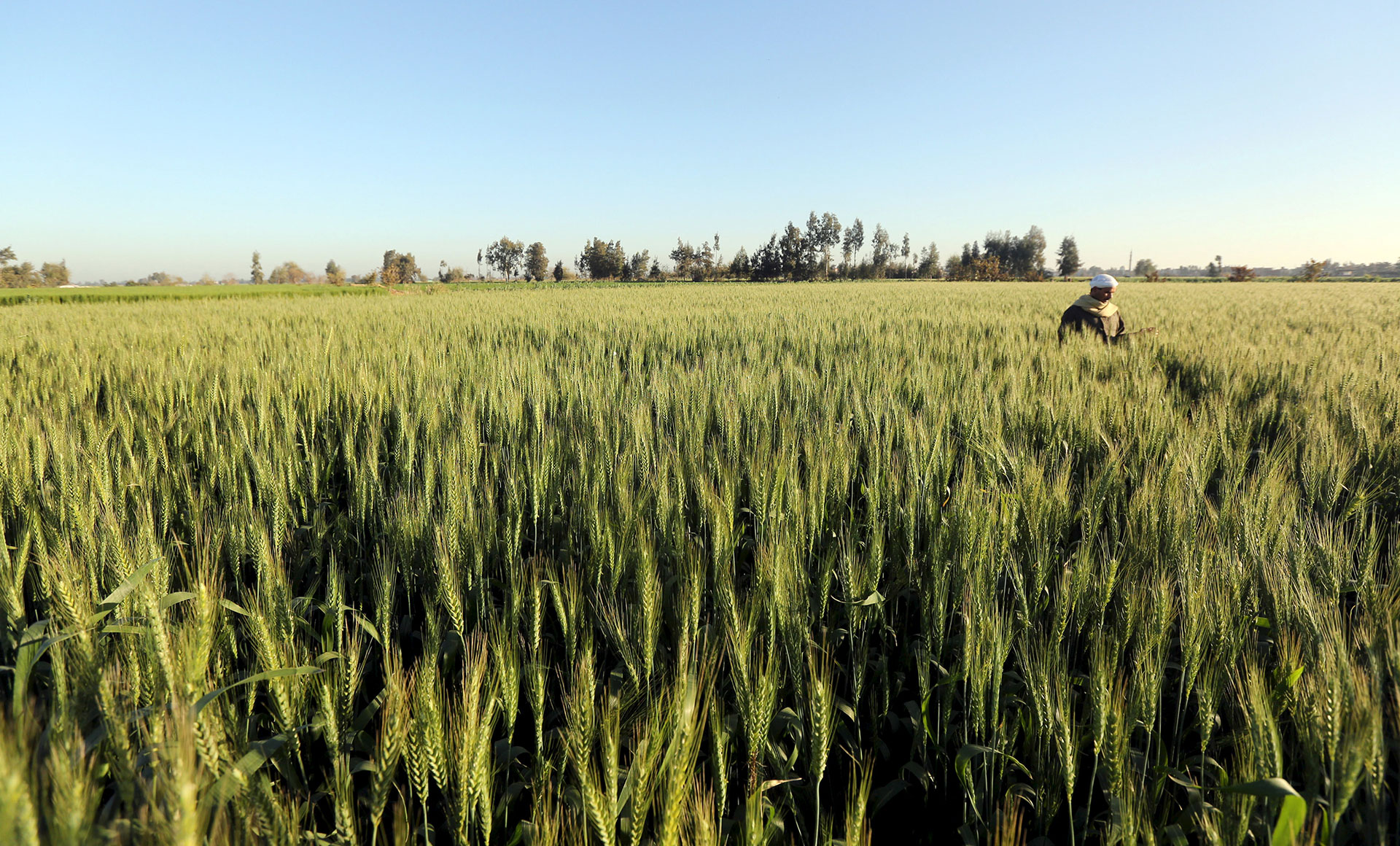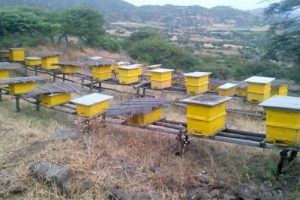
BY ABEBE WOLDEGIORGIS
Ethiopia annually imports 17 million quintal wheat from abroad and for the nation which suffers from scarcity of hard currency, such procurement is not acceptable.
It is also noted that, as agriculture is a main stay of the economy, importing agricultural products is a paradox.
Cognizant of these, to make the nation food self- sufficient the government is dedicating its time and energy to produce wheat in vast areas of the country both in low and high land parts through irrigation.
Daniel Muleta (PhD) is working in the Ministry of Agriculture as the Head of Wheat Irrigation Farm Promoting Department. While speaking to The Ethiopian Herald, he said that last year, it was possible to grow wheat in 20 thousand hectares of land.
This year in Oromia region alone, 300 000 farmers engaged in growing wheat on 16,0000 hectares of irrigation farm land and in the Amhara region in the Koga irrigation project, wheat is cultivated on 5,950 hectares of land.
This year in the first round of harvest it was planned to produce 5 million 75 thousand quintals of wheat and the gathering is undergoing since October 2020. From the Jima zone in Oromia State and Gode areas in Somali State, harvesting wheat is undergone.
In the second round it is planned to harvest 3.5 million quintals of wheat by cultivating 100 thousand hectares of land. In addition to this, it is planned to harvest 2.5 million quintals of wheat by growing on 245 thousand hectares land.
As mentioned above, Ethiopia annually imports 17 million quintals of wheat and based on this year’s plan, if 8.5 million quintals of wheat is harvested from the intended 245 thousand hectare, substituting half of the imported wheat will be attainable.
As to Daniel, in the 2021 budget year it was planned to cultivate wheat on 300 thousand hectares of land and to harvest 10.5 million quintals but later it was revised. Therefore, according to the revised plan, 8.5 million quintals of wheat will be harvested.
However, it must be noticed that, there were various upside downs among others, the occurrence of flood in the Afar region along with the frequent invasion of desert locust left the crop demolished. The outbrake of COVID 19 also brought its own impact on transporting agricultural inputs to the areas.
Aragaw Kasu is a farmer in Amhara region and as to him, in Koga irrigation project; he and his fellow farmers have cultivated wheat on 3,500 hectares of land through combining their small plots of land.
He further said that the government supported them by supplying inputs such as selective seeds and pesticides.
There are also projects which boost wheat cultivation in the Oromia State. The Ada woreda Agricultural Bureau Head Kebede Ararsa said that last year farmers could produce 50 quintals of wheat per hectare. As to him, farmers could better perform during the winter than the rainy season.
According to experts, farmers in Amhara State have been engaged in wheat growing for the last 11 years but this year they cultivate in a new way to make a difference and to that end they utilized better inputs and increased their farm areas.
According to the Ada woreda Agricultural Bureau head of Oromia State, the irrigation farm enables farmers to obtain more products than their usual farming. Irrigation projects help farmers to utilize water economically because the flow of water is controlled. During rainy season excess water showers on crops which in turn spoil the harvest and dwindled the amount of products. But through irrigation, water is regulated and no damage occurs on crop.
As to Agegnehu Teshager, president of Amhara State, this year, it was planned to cultivate wheat on 300 thousand hectares of land through irrigation in the region. But it failed to hit the target due to various shortcomings. It was possible to cultivate only 18 thousand hectares of land and out of this, only 13 thousand hectares of land could be covered by wheat. The farm is located in Agewawi zone of Amhara State in Western Gojam.
In the Awi zone of the same State, 5 thousand hectares of land is covered by wheat and also 3500 hectares of land is covered by wheat in the nearby areas by using Koga irrigation project. In addition, there is 1000 hectares of land covered by wheat in other areas. Most farmers in the State are inspired by the outcome of winter irrigation project and showed their resolute to devote their time for the increment of wheat production.
On the other hand, in Eastern Gojam, Southern Wollo, Central and Southern Gonder zones of Amhara State, many irrigation activities which created job opportunities for thousands are underway. As to the State’s president, the State has planned to produce 30 million quintals of wheat in the coming 5 years.
According to the Ethiopian Metrological Agency report in Ethiopia, a variety of climate extreme events are increasingly common, particularly droughts and floods. Changes in weather and climate, especially in the context of the dynamic Sahel monsoon, form a potential threat to agricultural production and food security throughout the region.
Recent evidence suggests that the incidence of droughts and floods in Ethiopia has increased in the last ten years when compared to the decade before 2013. Drought events alone are estimated to reduce Ethiopia’s GDP by up to 1 percent in a typical year 2021GC. This will likely be confounded by additional loss of agricultural productivity due to changes in climate.
According to Daniel, the nation has a potential not only for domestic food self-sufficiency but also in exporting wheat to the foreign market.
Formerly, the experiment to cultivate wheat in the arid areas of Gode through irrigation was not fruitful. Looking the practice as bad experience some have been hesitating weather this year’s wheat production in all parts of the country to substitute half of the nation’s wheat imports as per expected and next year, with better production, substituting 100 percent of imported wheat will be possible. But though the effort is continued there are also some upside downs which can be taken as constraint factors including natural disasters.
The Ethiopian Herald April 1/2021





